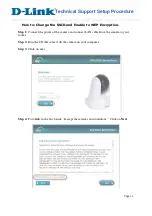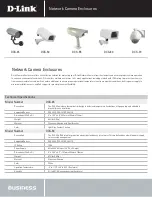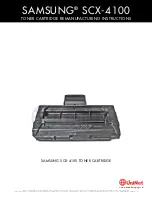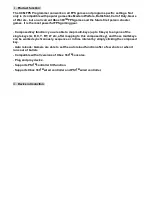
running a couple cycles a day. Ideally, if the battery is under heavy use, we recommend
doing a full charge cycle at least every 2 weeks.
•
Float-Charging: For charging sources that may be charging the battery for an extended
period of time (solar, or an alternator if motoring for a while); set the float voltage to
13.4V or 13.5V for the G31 and 4.5V for the L15. Firefly batteries do not require a float
charge. But, if you are float charging, due to their longer projected lifespan, it is
important to keep the float voltage at 13.4V or 13.5V (4.5V for each L16) to ensure the
battery lasts for as many cycles as possible.
•
Reset to bulk phase: for programmable charging sources, adjust the “reset to bulk
phase” to occur if the battery voltage drops below 12.0V for >1 minute for the G31 or
4.0V for >1 minute for the L16.
•
Periodic Fast Charge Recommendations: Note that periodic fast (high current) charging
can help restore usable capacity after periods of repeated slow charging and deep
discharge cycles. If continuously deep cycling, then ideally once a week the batteries
should be charged at a current of 0.4C (40 Amps for a 100 Ah battery) or 0.2C (25A per
G31 battery) at minimum. For applications lacking fast charging capability, contact OPE
or Firefly USA for alternative restoration procedures. Due to the low impedance design,
Oasis batteries can tolerate in-rush current levels as high as 3C (300A for a 100Ah
battery). Don’t be afraid of deep cycling and fast recharging with Firefly batteries!
•
Operating Temperature: The optimum operating temperature for a lead-acid battery is
25°C (77°F). As a rule of thumb, every 8-10°C (14-18°F) rise in temperature will cut the
battery life in half. Note that continuous duty at elevated temperature will shorten the
life of any battery.
Restoration Charge
As stated, Firefly Batteries can operate in a partial state of charge for long periods of time
without sustaining any permanent damage. The usable capacity will decrease, however, with
each cycle within a partial state of charge, up to a point. In order to regain the full original
capacity and in some cases more, it is necessary to perform a restoration charge. To perform the
restoration charge: charge the G31 to 14.4V or the L16 to 4.8V and continue to charge until the
current drops to 0.5 A on the G31 or 3A on a L16. Fully discharge the battery to 10.5V (G31) or
3.5V (L16), and then repeat the same charge cycle.
Safety
For any operation on the batteries, from storage to recycling, the
following safety rules should be observed:
•
Do not smoke.
•
Use tools with insulated handles to tighten connections.
•
Check that the connections between the cells / monoblocs are fitted
•
correctly.
•
Never place tools on the batteries (metal tools are particularly dangerous).
•
Never lift the cells / monoblocs at the terminals.

























